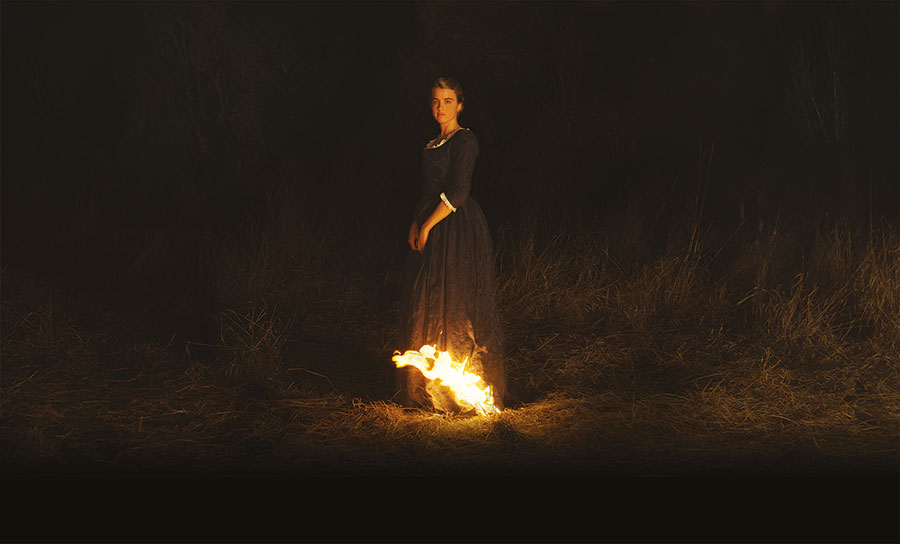In ‘Portrait of a Lady on Fire’, Looking is a Dangerous Act
Premiering in the US and UK this month, Céline Sciamma’s lesbian period drama employs the myth of Orpheus to re-centre the female gaze
Premiering in the US and UK this month, Céline Sciamma’s lesbian period drama employs the myth of Orpheus to re-centre the female gaze

We’ve known for a long time that looking is dangerous. Think back, for example, to the Greek myth of Orpheus, who journeyed to the underworld to plead for the return of his dead wife, Eurydice. Hades, god of the underworld, allowed Eurydice to follow Orpheus back to the world of the living, but delimited Orpheus’s sight: if he turned back to look at her, he would lose her forever. Orpheus looked, and was punished with the kind of loss that cracks you open.
Portrait of a Lady on Fire (2019), French writer-director Céline Sciamma’s story of queer love on a secluded family estate on an island off the coast of Brittany around 1770, only explicitly references the myth of Orpheus twice: in a book and a painting. However, the film is structured around the myth’s implication that looking, particularly of the forbidden sort, might ruin you, but that sometimes – when love, art or beauty are involved – ruin can be a risk worth taking.

Winner of the 2019 Best Screenplay award at the Cannes Film Festival, Portrait of a Lady on Fire – which opens in the US and UK on 14 and 28 February respectively – is Sciamma’s fourth feature film and her first period drama, numbering among several recently released lesbian historical dramas in film and television such as The Favourite (2018), Wild Nights with Emily (2018), Gentleman Jack (2019) and Elisa & Marcela (2019). Fittingly for a period piece, Sciamma’s film centres around a marriage that a countess (Valeria Golino) has arranged between her daughter Héloïse (Adèle Haenel) and a nameless Milanese gentleman, who requires a promissory portrait in advance of the wedding. Héloïse, however, rejects the marriage and refuses to sit for a portrait. With one portraitist already having failed to complete a painting – leaving an eerie, headless likeness of her in his wake – the countess summons Marianne (Noémie Merlant), an artist from the mainland, to pose as a companion for Héloïse’s daily walks and use what she observes to complete the portrait. As Marianne constructs Héloïse’s likeness from glances stolen during their strolls, the two develop a secret romance. ‘Do all lovers feel they’re inventing something?’ Héloïse asks Marianne. Here, erotic and artistic creation are intertwined, built from looking and being looked at in turn.

The film alternates between the wild landscape of Brittany’s coastal cliffs – aquamarine waters lapping against rocky outcrops – and, after sundown, the interior of the manoir, a labyrinth of winding hallways and unused rooms. After a group of anonymous men delivers Marianne to the island by boat at the beginning of the film, men all but disappear, leaving a small, intimate female cast. When Héloïse’s mother departs on a short trip, the island is free from patriarchal demands until, one day, Marianne finds a man sitting at the kitchen table, indicating the return of the matriarch and routine social order. In the chatelaine’s absence, Héloïse and Marianne’s illicit affair blossoms. Class divisions also break down as the two form a friendship with the family maid, Sophie (Luàna Bajrami), accompanying her to procure an abortion from a village medicine woman. Marianne turns away during the procedure. ‘Look,’ Héloïse instructs. Back at the manor, Héloïse is inspired to stage a tableau vivant of the abortion scene with Sophie by candlelight so that Marianne can paint it. Professional female portrait painters like Marianne – often unmarried, hailing from the mercantile class and trained by male artists – were not uncommon in France at the time. History painting, however, was considered to be a higher art form and, consequently, the exclusive domain of male artists. In Portrait of a Lady on Fire, the loosening of conventions that makes space for a same-sex relationship also allows the women to create a narrative painting of an abortion, recording a female experience that is rarely represented, even today.

The final scene of the film takes place long after the affair, at which point we presume that Héloïse has married a man. Marianne sees Héloïse, who is unaware of her presence, sitting alone in an opera house, and watches her former lover closely as the orchestra opens with the ‘Summer’ concerto of Antonio Vivaldi’s The Four Seasons (1716–17) – the same section that Marianne played on the piano for Héloïse many years before. It’s a rare musical moment in a sonically restrained film; the camera and Marianne fix unflinchingly on Héloïse as she listens raptly, a wrenching sequence of expressions registering on her face. Contrary to the privileged and possessive logic of the male gaze, Portrait of a Lady on Fire presents a queer love story in which looking can be intensely painful for the beholder. As the camera closes in on Héloïse, we can almost hear her saying once more: ‘Look.’
Main image: Céline Sciamma, Portrait of A Lady on Fire, 2020, film still. Courtesy: Neon






















